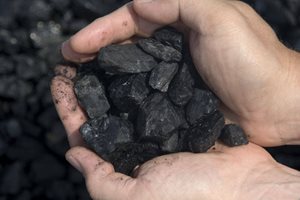 Aurizon, Australia’s largest rail freight company, is preparing to commit to a short-sighted gamble involving billions of dollars of its investor’s funds in what is one of the world’s largest potentially stranded fossil fuel assets.
Aurizon, Australia’s largest rail freight company, is preparing to commit to a short-sighted gamble involving billions of dollars of its investor’s funds in what is one of the world’s largest potentially stranded fossil fuel assets.
Aurizon CEO Lance Hockridge this week delivered a speech to the Israel Chamber of Commerce in which he signaled the company’s commitment to backing the greenfield railway line from the Galilee Basin and a new coal export terminal at Queensland’s Abbot Point “T0”, a combined investment of around A$6 billion.
In the Institute for Energy Economics and Financial Analysis (IEEFA)’s view, Aurizon’s involvement in the Galilee makes no financial sense in the context of current and forecast global energy market dynamics.
Aurizon seems to be predicating its business strategy on an incorrect financial assumption that has been debunked widely by global analysts including the International Energy Agency (IEA), which clearly assert slowing coal demand in China.
A key premise that underpins Aurizon’s strategic thinking is that China will continue to see thermal coal demand growth of 5% pa for the next decade, with the implication of continued growth thereafter.
Aurizon is wedded to an outdated business model, developed over the last decade when Chinese coal demand was growing. But the world has changed and the IEA and many others now expect China’s thermal coal demand will in fact peak in the next few years and at best flat-line thereafter.
Global investment analysis from HSBC, Deutsche Bank, Citigroup, Bernstein Research, Standard & Poor’s and Moody’s have all confirmed that global coal demand is slowing, and will continue to do so.
If Aurizon chooses to go ahead with its backing for this uneconomic project, it will be by far the largest coal-focused company on the Australian stock market, having significantly increased its exposure to financial risk due to the potential that these assets will become stranded.
To describe GVK as an “India Giant” as Mr Hockridge has done in his speech, is farcical. Its market capitalisation is $US400 million and it carries $3.3 billion of net debt. Not only is it small, but the equity market consensus forecasts that GVK will lose money every year for the 5 years through to 2016.
The world has changed and the dynamics of China’s energy needs have changed, yet companies like Aurizon are failing to adapt, at great financial peril to their shareholders.
The International Energy Agency (IEA) Medium Term Coal Market Report (2013) states:
“Our projections are strongly subject to Chinese uncertainties. The staunch commitment of the new Chinese government towards more efficient, sustainable and environmentally friendly growth, together with air pollution problems that have exacerbated public and government concerns over environmental issues, will accelerate the phasing out of old facilities, the adoption of cleaner technologies and the implementation of coal consumption cuts in some regions”.
The IEA’s central estimate is that given these policy drivers, after a decade of 9.8% pa demand growth through to 2011, China’s thermal coal consumption growth has subsequently slowed materially. The last two years have seen3-4% pa growth to reach 3,200Mt in 2013. Year-to-date 2014 growth has slowed to 1%. The IEA ‘New Policies Scenario’ (their central estimate) expects China’s thermal coal demand to peak during the 2015-2020 period around 3,350Mtpa and thereafter marginally decline through to 2035.
IEEFA estimates the construction of a 200km greenfield rail line plus upgrade to the existing Central Queensland Rail Network will involve in excess of A$2bn capital expenditure, while the construction of a new 50Mtpa coal export terminal at Abbot Point “T0″ will cost around A$4bn of capital. This infrastructure project will therefore involve expenditure of A$6bn, with Aurizon committed to funding 51% or A$3bn.
The Queensland government will trumpet all the new construction jobs this new coal port will involve, but will conveniently ignore the point that the majority of these jobs will occur in Korea, or whichever nation ends up using its State Owned Banks to fund the project and effectively ‘buy’ the jobs. The export coal terminal will be built offshore in Korea or Singapore then towed by sea before being slotted into place. Once built, the new coal terminal will have fewer than 100 staff employed. Unlike fishing, agriculture or tourism, a coal export facility is capital intensive and highly automated.
Aurizon’s decision rests on the strategic strength of its proposed partner, whom Hockridge names as “the India Giant GVK.” IEEFA questions the strategic strength of Aurizon’s proposed partner. GVK Power & Infrastructure is an emerging developer in India with a market capitalisation of equity of Rs25bn, which equates to just over US$400m. GVK Power has Rs200bn or US$3.3bn of net debt at its latest balance date. GVK also has to make a final payment of US$560m on this project to Hancock Prospecting by September 2014 (the third anniversary of this acquisition by GVK).
GVK reported a net consolidated loss of Rs3.4bn in 2012/13, a consolidated net loss of Rs3.7bn in 2013/14, and the Indian equity market consensus is for this rate of loss to continue and grow to Rs5.5bn (US$90m pa) by 2015/16. In large part, this reflects the crippling interest cost of servicing US$3.3bn of net debt given Indian corporate borrowing costs are 12-13% pa.
Legal challenges to GVK Hancock’s environmental approvals continue in the courts, meaning further costly delays.
Australian companies and financial institutions are taking their investment lead from the policy set by our governments. Given the current direction of Australia’s Federal and Queensland’s state governments, Australian companies would better serve the long term interests of their shareholders if they took their cue from what Australia’s major trading partners are doing.








